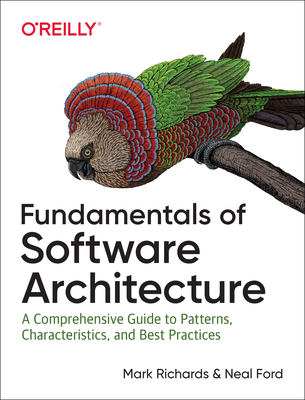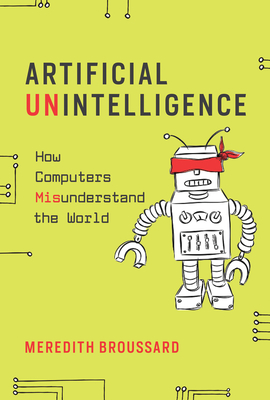Advanced Python 3 (3 Day Course) Training in Lodi
Enroll in or hire us to teach our Advanced Python 3 (3 Day Course) class in Lodi, California by calling us @303.377.6176. Like all HSG
classes, Advanced Python 3 (3 Day Course) may be offered either onsite or via instructor led virtual training. Consider looking at our public training schedule to see if it
is scheduled: Public Training Classes
Provided there are enough attendees, Advanced Python 3 (3 Day Course) may be taught at one of our local training facilities.
|
We offer private customized training for groups of 3 or more attendees.
|
||
Course Description |
||
| In this Python training course, students already familiar with Python
programming will learn advanced Python techniques such as: IPython
Notebook; the Collections module; mapping and filtering; lamba
functions; advanced sorting; working with regular expressions; working
with databases, CSV files, JSON and XML; writing object-oriented code;
testing and debugging; and learning about Unicode and text encoding.
This advanced Python course is taught using Python 3, however,
differences between Python 2 and Python 3 are noted.
Course Length: 3 Days
Course Tuition: $1190 (US) |
||
Prerequisites |
|
| Basic Python programming experience. In particular, you should be very comfortable with: working with strings; working with lists, tuples and dictionaries; loops and conditionals; and writing your own functions. Exposure to HTML, XML, JSON, and SQL would be useful. | |
Course Outline |
|
IPython Notebook
Getting Started with IPython Notebook
Exercise 1: Creating Your First IPython notebook
Exercise 2: More Experimenting with IPython Notebook
Getting the Class Files
Markdown
Magic Commands
Automagic
Autosave
Directory Commands
Bookmarking
Command History
Last Three Inputs and Outputs
Environment Variables
Loading and Running Code from Files
Shell Execution
More Magic Commands
Getting Help
Advanced Python Concepts.....
Advanced List Comprehensions
Quick Review of Basic List Comprehensions
Multiple for Loops
Exercise 3: Rolling Five Dice
Collections Module
Named Tuples
Default Dictionaries (defaultdict)
Exercise 4: Creating a defaultdict
Counters
Exercise 5: Creating a Counter
Mapping and Filtering
Map (function, iterable)
Filter (function, iterable)
Lambda Functions
Using Lambda Functions with map() and filter()
Mutable and Immutable Built-in Objects
Strings are Immutable
Lists are Mutable
Sorting
Sorting Lists in Place
The sorted() Function
Exercise 6: Converting list.sort() to sorted(iterable)
Sorting Sequences of Sequences
Sorting Sequences of Dictionaries
Unpacking Sequences in Function Calls
Exercise 7: Converting a String to a datetime.date Object
Modules and Packages
Modules
Packages
Search Path for Modules and Packages
Regular Expressions
Regular Expression Syntax
Try it
Backreferences
Python's Handling of Regular Expressions
Working with Data
Relational Databases
PEP 0249 -- Python Database API Specification v2.0
PyMySQL
Returning Dictionaries instead of Tuples
sqlite3
Exercise 8: Querying a SQLite Database
Passing Parameters
SQLite Database in Memory
Executing Multiple Queries at Once
Exercise 9: Inserting File Data into a Database
CSV
Reading from a CSV File
Finding Data in a CSV File
Exercise 10: Comparing Data in a CSV File
Creating a New CSV File
CSV Dialects
Getting Data from the Web
The Requests Package
Beautiful Soup
XML
Exercise 11: Requests and Beautiful Soup
JSON
Classes and Objects
Attributes
Behaviors
Classes vs. Objects
Everything Is an Object
Creating Custom Classes
Attributes and Methods
Exercise 12: Adding a roll() Method to Die
Private Attributes
Properties
Exercise 13: Properties
Objects that Track their Own History
Documenting Classes
Using docstrings
Exercise 14: Documenting the Die Class
Inheritance
Overriding a Class Method
Extending a Class
Exercise 15: Extending the Die Class
Extending a Class Method
Exercise 16: Extending the roll() Method
Static Methods
Class Attributes and Methods
Class Attributes
Class Methods
You Must Consider Subclasses
Abstract Classes and Methods
Understanding Decorators
Testing and Debugging
Testing for Performance
time.perf_counter
The timeit Module
The unittest Module
Unittest Test Files
Exercise 17: Fixing Functions
Special unittest.TestCase Methods
Assert Methods
Unicode and Encoding
Bits and Bytes
Hexadecimal Numbers
Exercise 18: Converting Numbers between Number Systems
hex(), bin(), ord(), chr(), and int()
Encoding
Encoding Text
Encoding and Decoding Files in Python
Converting a File from cp1252 to UTF-8
Exercise 19: Finding Confusables
|
Course Directory [training on all levels]
Technical Training Courses
Software engineer/architect, System Admin ... Welcome!
- .NET Classes
- Agile/Scrum Classes
- AI Classes
- Ajax Classes
- Android and iPhone Programming Classes
- Azure Classes
- Blaze Advisor Classes
- C Programming Classes
- C# Programming Classes
- C++ Programming Classes
- Cisco Classes
- Cloud Classes
- CompTIA Classes
- Crystal Reports Classes
- Data Classes
- Design Patterns Classes
- DevOps Classes
- Foundations of Web Design & Web Authoring Classes
- Git, Jira, Wicket, Gradle, Tableau Classes
- IBM Classes
- Java Programming Classes
- JBoss Administration Classes
- JUnit, TDD, CPTC, Web Penetration Classes
- Linux Unix Classes
- Machine Learning Classes
- Microsoft Classes
- Microsoft Development Classes
- Microsoft SQL Server Classes
- Microsoft Team Foundation Server Classes
- Microsoft Windows Server Classes
- Oracle, MySQL, Cassandra, Hadoop Database Classes
- Perl Programming Classes
- Python Programming Classes
- Ruby Programming Classes
- SAS Classes
- Security Classes
- SharePoint Classes
- SOA Classes
- Tcl, Awk, Bash, Shell Classes
- UML Classes
- VMWare Classes
- Web Development Classes
- Web Services Classes
- Weblogic Administration Classes
- XML Classes
Business Training Courses
Project Managers, Business Analysts, Paralegals ... Welcome!
Upcoming Classes
Gain insight and ideas from students with different perspectives and experiences.
Python Programming Uses & Stats
Python Programming is Used For:
Web Development
Video Games
Desktop GUI's
Software Development
|
Difficulty
|
Popularity
|
Year Created 1991 |
|
Pros
Easy to Learn:
The learning curve is very mild and the language is versatile and fast to develop.
Massive Libraries:
You can find a library for basically anything: from web development, through game development, to machine learning.
Do More with Less Code:
You can build prototypes and test out ideas much quicker in Python than in other language
|
Cons
Speed Limitations: It is an interpretive language and therefore much slower than compiled languages. Problems with Threading: Multi-threaded CPU-bound programs may be slower than single-threaded ones do to the Global Interpreter Lock (GIL) that allows only one thread to execute at a time. Weak on Mobile: Although, there are a number or libraries that provide a way to develop for both Android and iOS using Python currently Android and iOS don’t support Python as an official programming language. |
| Python Programming Job Market |

Average Salary
|

Job Count
|

Top Job Locations
New York City Mountain View San Francisco |
|
Complimentary Skills to have along with Python Programming
The potential for career growth, whether you are new to the industry or plan to expand your current skills, depends upon your interests:
- For knowledge in building in PC or windows, phone apps or you are looking your future in Microsoft learn C#
- For android apps and also cross platform apps then learn Java
- If you are an Apple-holic and want to build iOS and MAC apps and then choose Objective C or Swift
- Interested in game development? C++
- Data mining or statistics then go with R programming or MATLAB
- Building an operating systems? C
|






